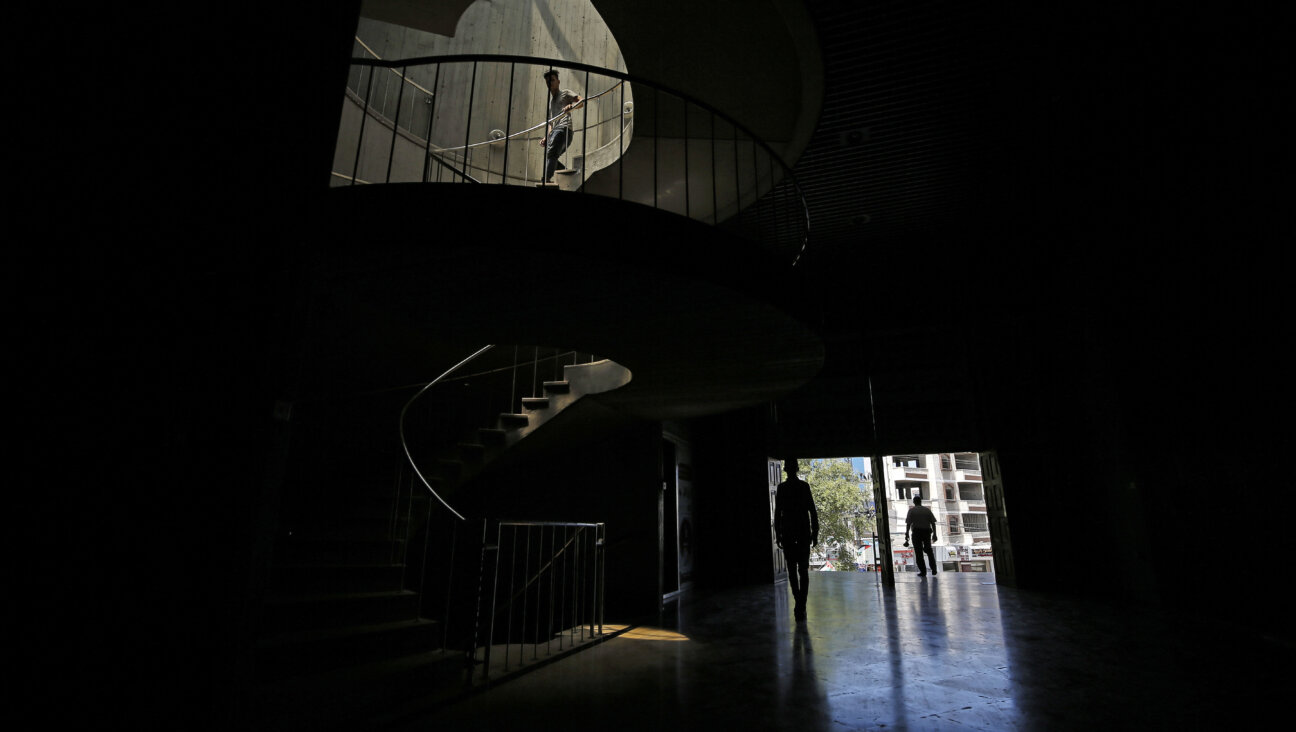Debut Crime Novel Set in Boro Park Hasidic Community

Opposites Attract: Like her heroine Rebekah Roberts, Julia Dahl (above) has a Jewish mother and a Christian father. Image by Chasi Annexy
● Invisible City
By Julia Dahl
Minotaur Books, 304 pages, $24.99
About a week or so after I published my first short story in Ellery Queen’s Mystery Magazine, I learned an embarrassing lesson about the importance of getting things right. Scoring a publication credit in EQMM, the longest continuously running, and arguably the best magazine in the mystery genre, was a big deal for me — something I’d long wanted, but refused to try at least until I had gone through several years of trying and failing, trying harder and building up publishing credits. When I finished the last draft of “Boy Inside the Man,” a nasty, brutish and short tale about a boy’s bar mitzvah that culminates in tragedy, I knew it stood a great chance of passing EQMM’s tests.
The story appeared in the magazine’s May 2007 issue. I happened to be visiting my parents in Ottawa at the time the issue came out and brought a copy of the issue with me. My mother read the story’s opening paragraph in the kitchen and looked up. “How can a boy put on tefillin on a Saturday morning?” she asked. Despite months of lead time, I hadn’t caught that error. Nor had the magazine’s editors. For non-Jews or barely practicing Jews, the story had the appropriate symmetry and emotional resonance, drawing from my own conflict-laden Modern Orthodox background.
I stammered out some explanation to my mother, my cheeks flushing in shame, and later to a handful of others who wrote in noting my mistake. Should the story ever be reprinted, I have two options: change the bar mitzvah day to Thursday (plausible, but less likely to be the overt celebration I depicted) or cut out any mention of tefillin (equally plausible, but ruins some key introspection on the boy’s part). What I learned was invaluable: It may be fiction, but it’s the writer’s responsibility to keep potential readers tied to the story. So why not get the details as close to correct as possible?
My previous embarrassment was the baggage I dragged with me while reading Julia Dahl’s debut crime novel “Invisible City.” It’s a book I was predisposed to both liking and judging harshly, because Dahl, a Brooklyn-based journalist who often works the criminal justice beat, sets it largely within the Borough Park community of hasidic Jews, albeit through the prism of her wholly non-observant 20-something heroine Rebekah Roberts.
Like Dahl, Roberts has a Jewish mother and a Christian father, and works as a stringer for a city tabloid, as Dahl once did. But Roberts’s mother is a temporary escapee from Borough Park whose year-long rumspringa produces Roberts — only for her mother to trade her new family for her old one. That inner turmoil slaps Roberts with the force of winter wind on the Gowanus River when she gets called out to a murder scene around there, where a hasidic woman’s body has been pulled out of a scrap pile. The NYPD seems to be deferring to the Shomrim. The woman’s family seems to have a lot to hide. And the moment one of Roberts’s sources utters,“You look just like her mother,” she realizes she has to see the case through, no matter how much she fears where that path will lead.
The specter of abandonment casts a pall over Roberts’s entire life, as she readily admits throughout “Invisible City.” She’s nicknamed “Scoop” by a love interest to whom she can’t bring herself to commit fully; the same diffidence binds her to the stringer’s life. She “cring[es] at the truth” that she’s never had a scoop: “As a stringer, my job is to go where I’m told, get some information, repeat. I’m in a different borough every day — one day a murder on Staten Island, one day a press conference in midtown, one day an old woman dead in a broken elevator in Brownsville — and nobody knows my name or face until I show up. Every day I have to ingratiate myself to a whole new group of people.”
The transient life Roberts first embraces and then becomes disenchanted with rings true, especially when Dahl adds the details of constant phone calls, the tabloid’s internal description of the victim as “crane lady,” and the facts-first approach that earns Roberts her 150 bucks a day, yet requires her to suppress her emotions. Her inner turmoil as she realizes she wants something more out of journalism, and might want to know why her mother returned to the hasidic world, further resonates; existential confusion and loneliness are universal.
“Invisible City,” however, needs to sell the reader on a curtains-up look at the hasidic world. Dahl provides the requisite compassion, portraying the victim, 30-year-old Rivkah Mendelssohn, as a woman wanting something beyond being a wife and mother, and her husband, the obvious suspect, as a man with a good reason for keeping secrets. Dahl also moves beyond New Utrecht Avenue to a safe house in Coney Island where those traveling “off the derekh” find refuge with one another.
But, just as my mistake about tefillin on a Saturday took Jewish readers out of my story, Dahl’s reliance on a plot point where the Borough Park community could bury murder victims without an autopsy almost derailed my ability to enjoy “Invisible City.” The no-autopsy edict has been a reality in the upstate New York ultra-Orthodox enclave of Kiryas Yoel — referenced often in the novel — as well as in other cities in Israel, and the Shomrim are certainly present in Brooklyn, in Borough Park, Crown Heights, or Williamsburg.
But it’s hard to swallow that a murder that attracts the attention of secular media, such as the tabloid for which Roberts works, could be investigated without an autopsy. The office of chief medical examiner, which operates in all five boroughs, has certainly kept in mind all manner of religious objections. I witnessed this myself the summer I spent as an intern at the Manhattan branch, the ME’s office is careful to autopsy Orthodox Jewish murder victims with minimal incisions, carefully covered in a white shroud, under the close supervision of a rabbi and family, as necessary. The no-autopsy plot point may provide “Invisible City” with much drama and key clues, but Dahl could have wrung similar drama from conflicts in the autopsy room.
“Invisible City” redeems itself by steering clear of stereotype, keeping the focus on Roberts’s acceptance of her anger and her desire to move past it, and by ending the story with a surprise twist that doubles as commentary on the double-edged nature of the hasidic world’s insularity, which both binds families in genuine closeness and marginalizes those who are too disturbed or restless to fit in. Roberts has a good future ahead of her as an investigative heroine, while Dahl has the chops to develop her main character over multiple books — so long as she takes the requisite care to think through all possible plot points.
Sarah Weinman is the editor of “Troubled Daughters, Twisted Wives: Stories from the Trailblazers of Domestic Suspense,” published by Penguin.
A message from our Publisher & CEO Rachel Fishman Feddersen

I hope you appreciated this article. Before you go, I’d like to ask you to please support the Forward’s award-winning, nonprofit journalism during this critical time.
We’ve set a goal to raise $260,000 by December 31. That’s an ambitious goal, but one that will give us the resources we need to invest in the high quality news, opinion, analysis and cultural coverage that isn’t available anywhere else.
If you feel inspired to make an impact, now is the time to give something back. Join us as a member at your most generous level.
— Rachel Fishman Feddersen, Publisher and CEO






















